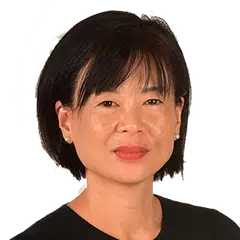Three better than two: Putting S’pore, Riau Islands and Johor SEZ together will up investor appeal
Sign up now: Get ST's newsletters delivered to your inbox

(From left) DPM Gan Kim Yong at a panel discussion with Mr Liew Chin Tong, Malaysia’s Deputy Minister of Investment, Trade and Industry and Professor Tirta Nugraha Mursitama, Indonesia’s Deputy Minister for Investment Cooperation, on July 3.
ST PHOTO: KEVIN LIM
Follow topic:
SINGAPORE – Singapore and its neighbours are exploring ways to deepen economic integration between Singapore, Indonesia’s Riau Islands and the Johor-Singapore Special Economic Zone.
The initiative arose during talks among ministers from the three nations ahead of the Asean Conference organised by the Singapore Business Federation (SBF), UOB, RSM Singapore and Rajah & Tann.
Drawing the Riau Islands – Bintan, Batam and Karimum – closer, and with the special economic zone, would bolster what is known as the Sijori Growth Triangle, a trading group initiated in the late 1980s linking Singapore, Johor and the three islands.
The grouping aimed to capitalise on each participant’s inherent strengths: Singapore’s capital, infrastructure and expertise; Johor’s land and workforce; and Riau’s natural resources and low-cost labour.
Significant investments from Singapore have since flowed into Batam, Bintan and Johor, but progress has been hindered by issues such as uneven levels of development, divergent agendas and global economic crises.
Deputy Prime Minister Gan Kim Yong, who is also Trade and Industry Minister, told a panel discussion at the conference at Resorts World Sentosa on July 3: “Two is better than one, three is better than two. If we can realise our original vision of Sijori, we will be even more attractive to investors.”
The talks were meant to be “secret”, he quipped, before they were revealed during the discussion at the conference, which drew more than 600 delegates from around 20 countries.
Mr Gan also addressed the need for Asean nations to cement trade deals with the US in the light of news that Vietnam has just struck such an agreement
US tariffs on most imports from the region are expected to apply from July 9, when a 90-day reprieve
Mr Gan said trade fences set up by the US are not coming down any time soon, and businesses must prepare to face persistent higher costs and scrutiny.
He also stressed that Asean wants to engage in constructive discussions with the US: “We have also decided not to impose any retaliatory measures in response to the US tariffs, because we believe that such actions will be counter-productive.”
At the same time, the region is responding by deepening integration, upgrading trade pacts and harmonising digital standards among its 10 members.
“We cannot bank on the possibility that the tariffs will go away after four years with a different US administration,” Mr Gan said, citing growing bipartisan consensus within the US on its new world view.
Asean governments are boosting support for businesses to meet the new trading world, where costs and scrutiny will be higher for goods going to the US, the world’s biggest import market.
Policymakers in Singapore are stepping up measures to help firms digitalise and develop new products, services, markets and even new business models.
Mr Gan urged businesses to take the initiative: “The Government can do what a government can do, but business must be done by businessmen.”
Local bank UOB set the tone for the conference by inking five memorandums of understanding with industry partners in Singapore, Malaysia, Hong Kong, China and Japan to boost cross-border investment and accelerate capital flows within the region.
Mr Liew Chin Tong, Malaysia’s Deputy Minister of Investment, Trade and Industry, said Asean should shape its own destiny in the next 20 years.
He said the era defined by China as the world’s factory with one supply line is over, adding: “We are dealing with the US in a bilateral manner because we are still dealing with the last (world) order.
“We must look forward to how to create the next order in a multipolar world.”
The bloc should think about creating its own global heavyweights, such as China’s Huawei and South Korea’s Samsung, said Mr Liew.
Closer integration may be called for. He said: “At some point, we must ask if we need an Asean industrial policy.”
But with Asean’s unity sometimes questioned, words are easier than deeds.
Professor Tirta Nugraha Mursitama, Indonesia’s Deputy Minister for Investment Cooperation, added: “Talking is not enough, but how to find the formula and basically create benefit for those parties involved.”
He acknowledged the challenge of getting the bloc to work as one, noting it gets harder when it treads on sovereignty, and even egos.
SBF chief executive Kok Ping Soon, who moderated the panel, questioned Asean’s ability to represent the region as a bloc, citing the example of Vietnam, which negotiated directly with the US.
Mr Gan responded that at the end of the day, tariffs may need to be negotiated separately and bilaterally, but he added: “At the same time, at the back of our minds, we remain committed to Asean cooperation and integration.”
Asean members have varying economic structures and strategies, but that can also be an edge.
He said: “Because of these differences, it creates a lot of space for us to work together. Imagine, if all 10 were identical, we would be competing with each other.”
SBF chairman S.S. Teo said Asean has made progress.
In May, it concluded negotiations on an upgraded free trade agreement with China and separately produced a joint commitment to deepen economic ties with Gulf states and China.
Member states are also partnering on initiatives such as cross-border QR payments, smart city networks, sustainability, supply chains and digital transformation.
“In this environment, Asean’s collective response will be crucial,” Mr Teo said.


